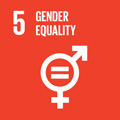- Docente: Franco Merni
- Credits: 4
- SSD: M-EDF/02
- Language: Italian
- Teaching Mode: Traditional lectures
- Campus: Bologna
-
Corso:
Second cycle degree programme (LM) in
Sciences and Techniques of Sports Activities (cod. 9069)
Also valid for Second cycle degree programme (LM) in Sciences and Techniques of Sports Activities (cod. 9069)
Second cycle degree programme (LM) in Wellness and Sport Management (cod. 9214)
Second cycle degree programme (LM) in Sciences and Techniques of Sports Activities (cod. 8037)
Learning outcomes
The students will have the opportunity to:
1) Know the methods of performance analysis and investigation, with the aim to construct the performance model of different sports disciplines. The physical performance and the movement of athletes during competitions will be assessed using notational and biomechanical analysis.
2) Use sports performance analysis devices available at the Record laboratories.
3) Know the organization of technical staffs and the role of the match analyzer and of the scout man, focusing on technical aspects of these professions
Course contents
Talent identification and performance analysis
· Aims and research methods for talent identification and development
· Gender differences in sports performance
What is the performance analysis
· The feedback and training process
- The study of sport Models
- Research method and statistics applied to performance analysis
· Review of the literature
Performance monitoring: times and fractions of competition
·Secular trends of Records
- Partial times related to total time and effort distribution
· Working and pause time in intermittent sports
· Real time monitoring on field and a-posteriori video recording
Monitoring the performance mechanical indices
· Frequency and amplitude of cyclic movements, using a step- counter and pedaling-monitor
· Average speeds and peak, accelerations, using radar, GPS systems and accelerometers
· Using contact-mat and Optojump or accelerometer for estimation of competition performance
· Using strength sensors on of competition tool (bike, oar, paddle etc.)
Biomechanical Performance studied with optoelectronic instruments
· Patterns in individual and team sports
· Athletics (runs, jumps and throws) running as a performance model
· Gymnastics and figures skating
· Tennis and racket sports
· Karate
· Volleyball, Basket, Soccer etc.
Monitoring of interne load during competition and simulation
· Checking and recording heart-rate, VO2 and lactate
· Competition performance evaluation and simulation related to intensity, work & pauses lenght.
- Evaluation during competition simulation and relationship with incremental tests performance with portable gas analyzer.
- Energy cost and efficiency determination in different sports.Readings/Bibliography
Notational Analysis of Sport
M. Hughes and I.M. Franks
Routledge London 2004
Routledge handbook of Sport Performance Analysis
T. McGarry e P. O'Donoghue
Routledge London 2013
Essentials of Performance Analysis in Sport: Third edition
M. Hughes, I.M. Franks, H. Dancs
Routledge London 2019
Papers and reviews provided by the lecturer
Teaching methods
Frontal lectures
Seminars with experts
Specific Project Work presentations
Assessment methods
Final oral test
Practical trials during the laboratory experiences
Teaching tools
Frontal lectures
Seminars with experts
Laboratory and field instruments to analyze the Performance:
· Filming with cameras and qualitatively and quantitatively video-analysis.
· Stop-watch and electronic instruments to calculate the time.
· Frequency and amplitude evaluation of cyclic movements, using step- counters and pedaling-monitor and accelerometers
· Evaluating Speed and acceleration of athletes and competition tools with GPS, accelerometers and radar systems
· Dynamic valuation with strength sensors applied on competition tools and contact-mats
· Optoelectronic systems to evaluate the biomechanics performance
· Using heart-rate monitors, lactate analyzers, gas analyzers evaluate performance in competition and simulation.
Office hours
See the website of Franco Merni
SDGs

This teaching activity contributes to the achievement of the Sustainable Development Goals of the UN 2030 Agenda.
